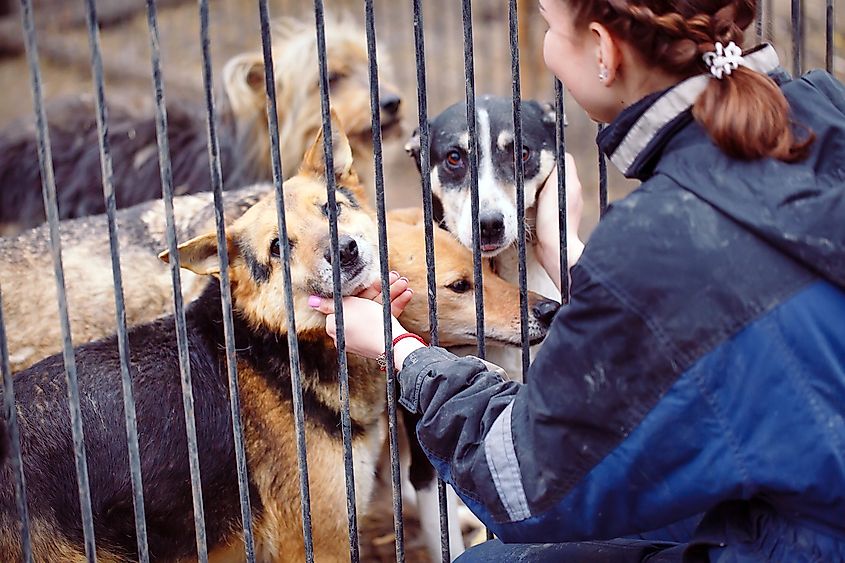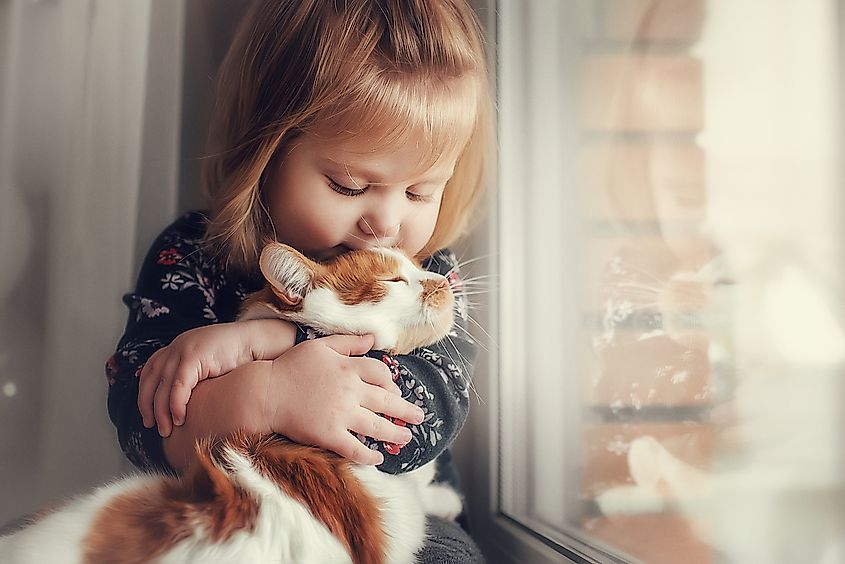How Many Pets Are Euthanized Each Year In The US?

- Each year over a million cats and dogs are euthanized in the US.
- The most humane method of putting an animal down is through chemical injections.
- Some people pay hundreds of dollars to bury their pet in an official pet cemetary.
At the time of this writing, statistics on how many owned pets, or non-shelter pets are euthanized each year in the US was not available. In terms of shelter pets however, many are killed each year for various reasons. Different organizations and institutions quote varying numbers as to how many potential pets are put down.
According to the ASPCA, about 1.5 million shelter animals are euthanized each year in the US, which includes about 670,000 dogs and 860,000 cats. According to PETA, this number sits at 3 million cats and dogs.
Whatever the case may be, everyone can agree that the number of animals euthanized in shelters has dropped drastically from the 1960s, when about 10 to 20 times as many dogs, and likely cats too, were put down in shelters.
Why are so many animals killed and can this be avoided? Sometimes animals are too sick to get better, but it could be that more could be done to save them.
Why Animals Are Euthanized

The idea of “euthanasia” is distinct from “killing”. To practice animal euthanasia is to end an animal’s life in order to put it out of its misery, and cease any unstoppable suffering it is enduring. The word “euthanasia” is formed by two Greek words: “eu” which means “good” and “thanatos” which means death. Animals in shelters who are euthanized most often have their life ended because the end is nigh anyways. They are sick with incurable diseases like cancer. Others are very old and near the end of their lives, and some have aggression problems that cannot be fixed, making them impossible companions for humans.
Sometimes owners can not afford to pay to have their sick pet put down, and so they bring the pet to live at a shelter. If the animal cannot be helped, it will be euthanized by the shelter. According to the ASPCA, a healthy, happy cat or dog is never euthanized these days in the US simply because there was no home for it. Whether this can be applied to all animal shelters across the country is not known.
Who Is Allowed To Euthanize?

Generally speaking, only accredited and licensed people can euthanize animals in the US. Almost every state has specific laws in place as to who can perform the act. Veterinarians and certified professionals are usually in charge of the process. The person doing the euthanizing must have permission to possess and handle the chemicals often used in putting animals down. This is in order to ensure that it is done in the most humane way possible.
Some states allow non-certified animal shelter employees to perform euthanasia on animals, and others allow for “emergency” euthanasia, which involves shooting an animal, such as a horse. This is done by animal control agents, veterinarians, or law enforcement officers.
How Animals Are Put Down
While it is sad to think about, various methods are used to end a suffering animal’s life. Lawmakers have consulted with the American Veterinary Medical Association (AVMA) in many states to determine what is the most humane method of euthanizing an animal. This was found to be through injections of sodium pentobarbital. The AVMA’s guidelines regarding euthanasia also permit the use of gas chambers to end animals’ lives. Some states find this method to be inhumane, but many states do still allow for their use. Others allow some gas chambers and not others. The use of carbon monoxide (CO) to euthanize is banned in some places, but not carbon dioxide (CO2).
What is completely unrecommended? A person should not euthanize an animal by poisoning it with pesticides, cleaning agents, household chemicals, disinfectants, nor by causing an animal to drown or freeze to death. These are all considered to be methods that are too torturesome.
Interesting Facts
- Over half of owners stay in the room while their pet is being euthanized, in order to honor their life. Others feel they will show signs of emotional distress and do not want to upset their pet, so they feel it is better to leave the room.
- Some people bury their pets in a casket in a pet cemetery, and pay to do so.
- Burying your pet in the backyard could be dangerous to other animals due to the amount of chemicals in their body.
- Some people cremate their lifeless pets.
Are There Enough Pets for Everyone?

There are about 7,100 shelters in the US. By surveying shelters, researchers from Mississippi State University College of Veterinary Medicine found that about 5.5 million dogs enter shelters each year. About 780,000 are euthanized. The ASPCA estimates that about 3.2 million cats in the US enter shelters annually, and that 860,000 are put down. The animals that are not euthanized are adopted to new families, returned to their owners, or transferred to other shelters or animal rescue centers.
Some, like Mark Cushing of the Animal Policy Group, a lobbying firm, say that the US has a demand for about 8 million dogs alone, each year, and that shelters cannot meet this need. Because of this, he says, the breeding of dogs should continue in the US.
Others, such as the director of the No Kill Advocacy Center in California feel that Americans should consider adopting pets that need homes from places like Puerto Rico and Mexico and cease relying on breeders for a pet, as many are in need. Which route is the best for the future of pets is hard to say.
Controversies
One of the main controversies surrounding animal shelters and euthanasia is the existence of gas chambers to end the lives of animals. According to the Humane Society, this process involves placing an animal in a small box with no light. The animal often struggles for help and can go into convulsions for a length of time as it gasps for air, before dying. If an animal is very ill or stressed out, it can take even longer for it to pass away. For these reasons, many animal rights advocates would wish to do away with this method of animal euthanasia, but it is still permitted in many states.
Another issue is the problem of exposed animal carcasses hurting other animals when injections are used. The US Fish and Wildlife Service has told of a case where a horse was put down by injections, and birds that came to eat from its carcass out in the open then died from ingesting the chemicals present in the horse. This is called secondary poisoning, and it is something that veterinarians enacting euthanasia can be charged with if they are not careful. Euthanized animals should be buried or cremated.
Options For Owners
Pet owners who are struggling to pay for their vet bills are encouraged by animal authorities to seek funding through crowd-sourcing, pet insurance, and non-profit organizations before choosing to have their pet euthanized.











